Sculptors Jean-Michel Othoniel and Johan Creten Create Their Seaside Escape in Sète, France
Sculptors Jean-Michel Othoniel and Johan Creten, who first met some 30 years ago, have dedicated their lives to art and creation. The French Othoniel has spent his career expressing himself in a variety of materials, but is best known for his works in glass, especially the pieces evoking long strings of colorful beads. Extraordinarily productive, he has been the subject of dozens of solo exhibitions, including a mid-career retrospective that started at the Pompidou in Paris and traveled around the world. He has also designed a station entrance for the Paris Métro, created a new permanent installation in the gardens of Versailles (in collaboration with landscape architect Louis Benech), and will mount a small exhibition of new work this summer at the Louvre. Creten, a Belgian known for his work in ceramics, has also shown extensively around the world. His output is characterized by a constant pushing of the boundaries of clay, a medium he helped pioneer in the context of contemporary art.
Based in Paris with separate studios and an apartment near the Picasso Museum in the Marais, the artists decided they wanted a house to get away to, where they could experiment and make things, but also rest and dream—“a place,” in the words of Creten, “to think and create.” And Sète, a port city in southern France about four hours by train from Paris, was a natural choice.
They had already spent a great deal of time there. “Thirty years ago, we were both invited to work here,” Othoniel explains. “My very first exhibition was at the Villa Saint Clair, an artist-residency program in town. At the end of the ’80s, it was a bit underground and full of creative people. It was a very joyful time. And we have come back every summer for the past ten years.”
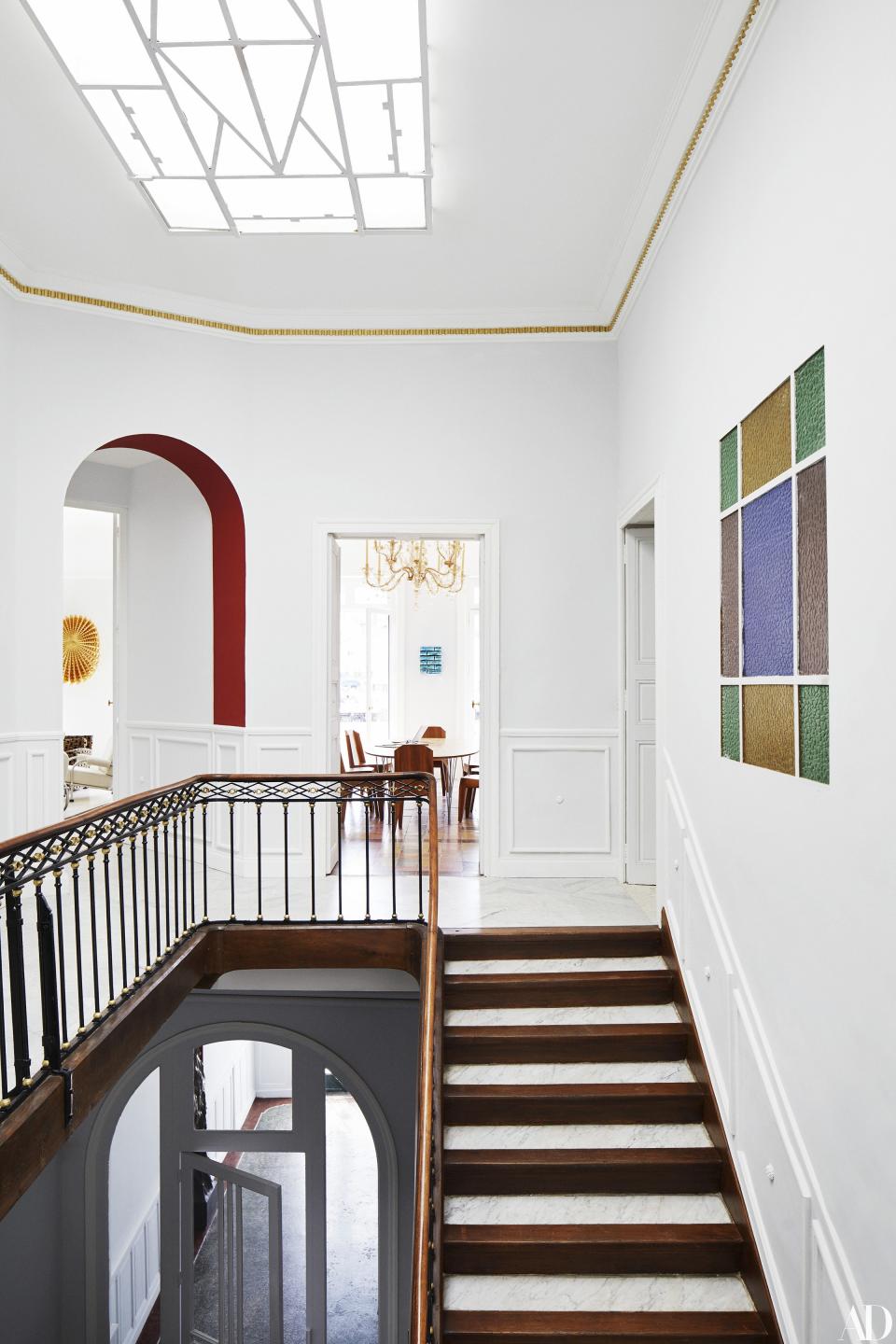
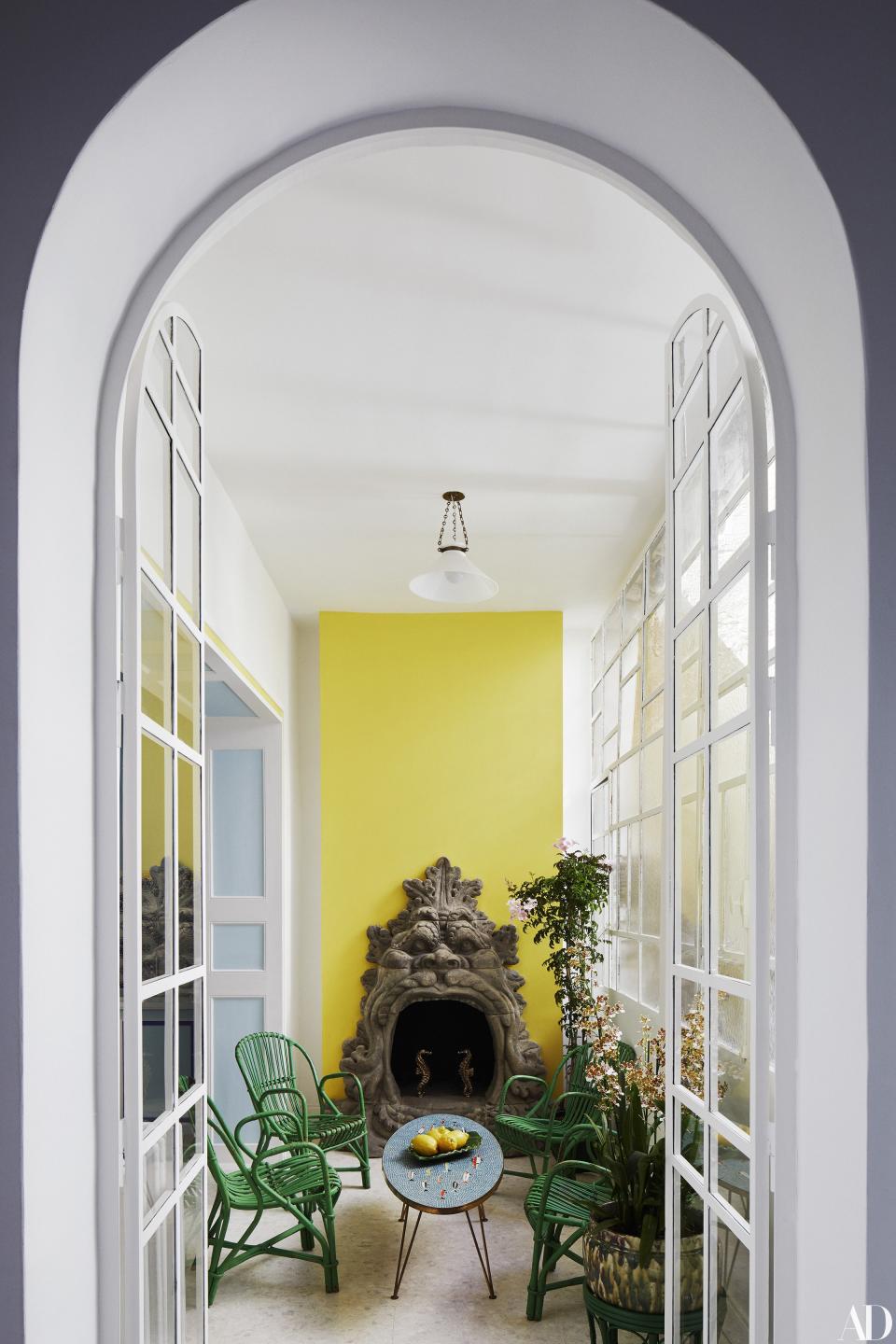
Creten calls it a “living” city. “We have a theater, book-shops, artists, a daily market, a poetry festival,” he enthuses. “I wanted a place where I could buy The New York Times in the morning, and there are two places where I can do that! It is a small city, but not a village.” And although within close proximity to happening cultural centers like Arles and Nîmes, Sète is still under the radar and affordable.
At first, they hoped to find a villa on the hill overlooking the port, with a garden and a pool. Instead they ended up with the exact opposite, a house down on the tightly packed waterfront. But as Othoniel points out, from their side of the city, they have spectacular views of the water and that villa-laden hill, the Mont Saint Clair and its Virgin statue.
The house they bought had been built in 1840 for the family of the painter Frédéric Bazille, a friend of Monet, Degas, and Cézanne. It had originally been part of a much larger compound that had passed into the hands of industrial wine merchants, who transformed the ground floor into a warehouse. While the bones were great, it was completely run-down, so they set off on a yearlong renovation project. Othoniel wanted to conserve the original structure and bring back the original “circulation” of the house. They opened up two doors that had been closed off and completely redid the two bathrooms. The huge ground floor, with ceilings more than 17 feet high and tall doors opening directly onto the port, has been converted into studio spaces.
In renovating, the artists decided to conserve traces of the house’s many transformations over the years including a floor from the 1970s, some Art Deco elements, a couple of mirrors, the original kitchen tiles, and all of the colored-glass elements. They also delighted in the opportunity to put on display pieces of their work and those by other artists. “Here we have space,” Othoniel explains. “We had works that had been in storage for the past ten years. These are works from our personal collections, and it was a big step for us to decide to live with them.”
Go Inside the Art- and Light-Filled Home and Studio
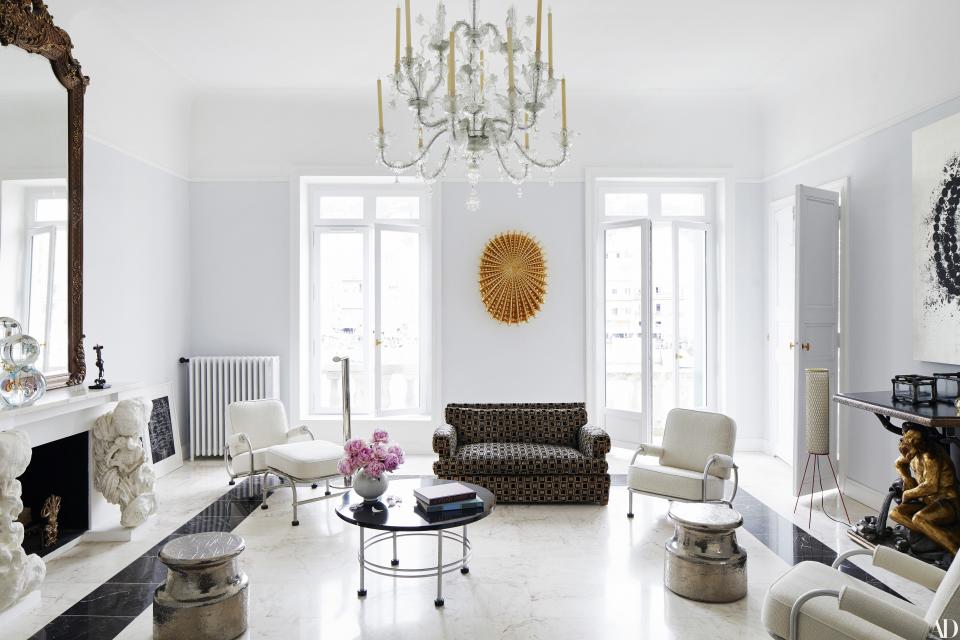
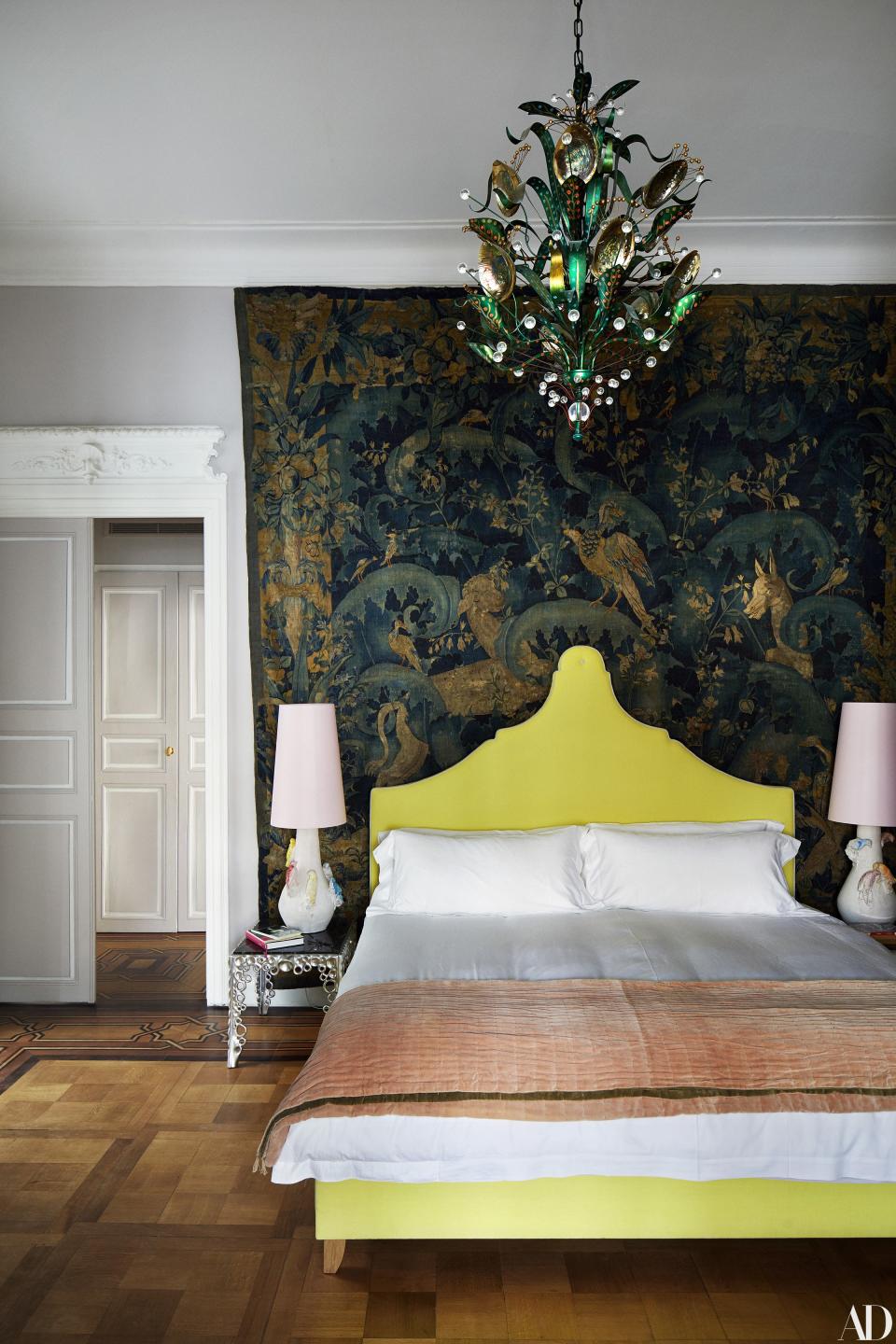

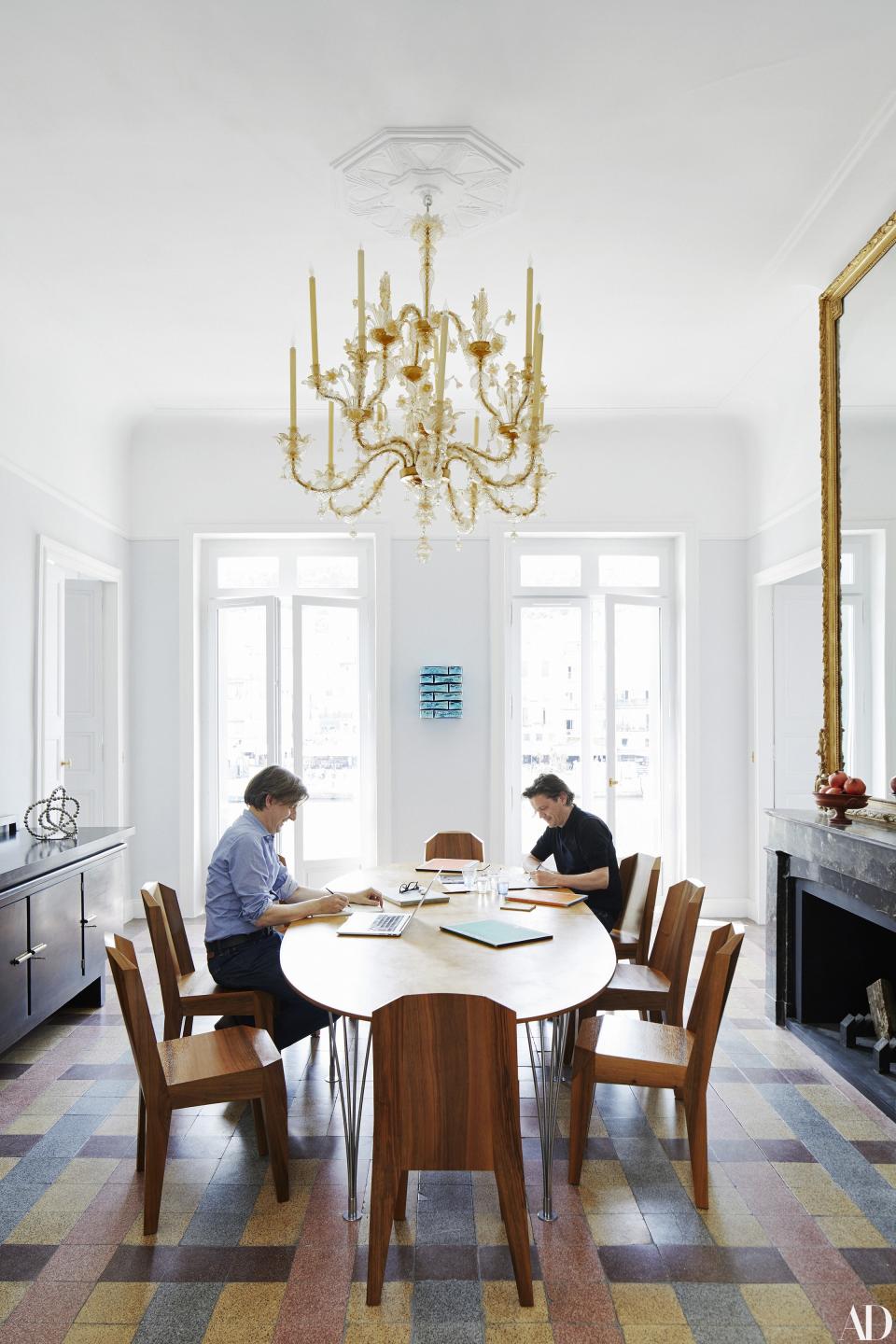
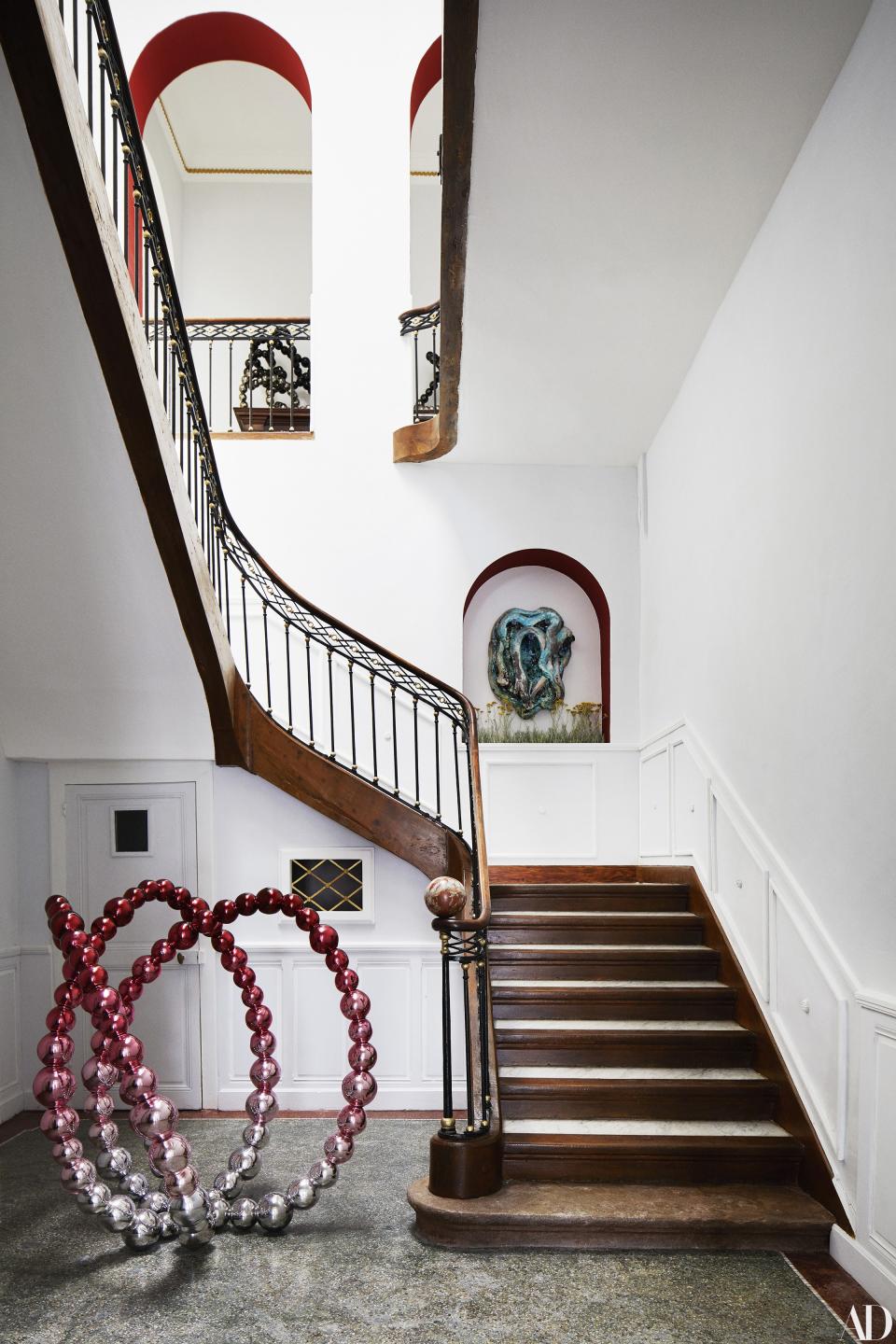
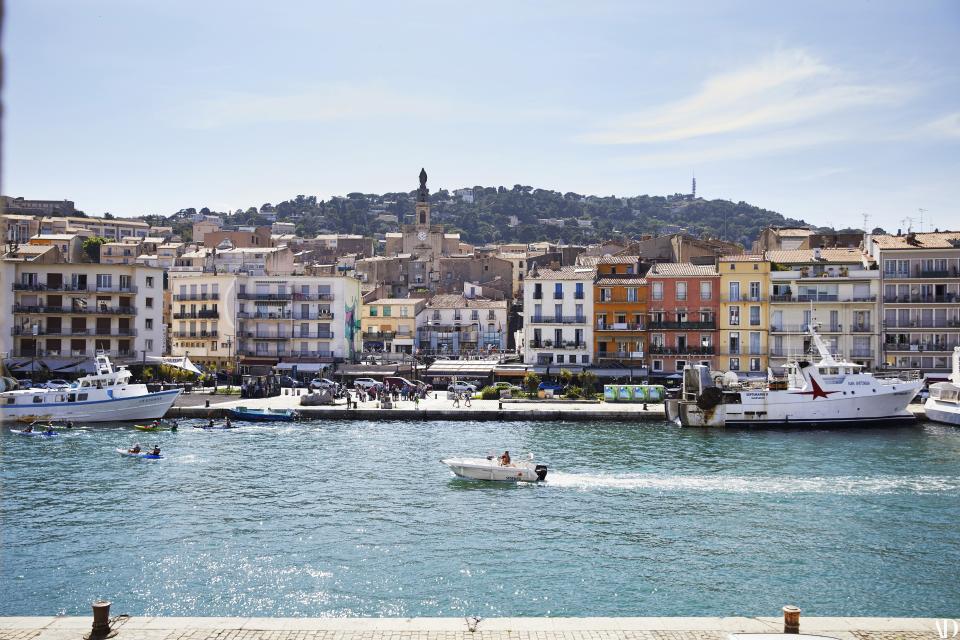

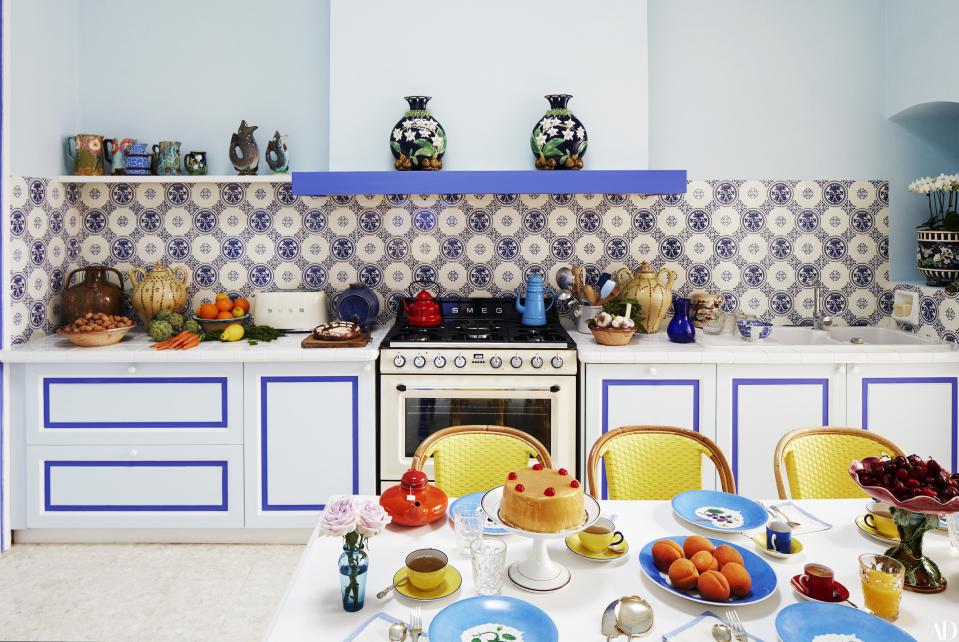
Offering opportunities to experiment, the new home has inspired them to create site-specific art. Creten first conceived the spectacular sculptural mantelpiece in the living room several years ago and was finally able to fabricate it for this house. Both artists have also crafted light fixtures: Creten did the lamps in the master bedroom, and Othoniel made the hanging lanterns for the hallways.
“This is really the first time we are sharing our private space with anyone outside our circle of friends and family,” Othoniel says. And they hope that this place will be the first step in establishing a foundation for their work. Indeed, they want this to be an open, welcoming, rejuvenating house. “A happy place,” says Creten, “but also a place where we can slow down and live a bit differently.”

